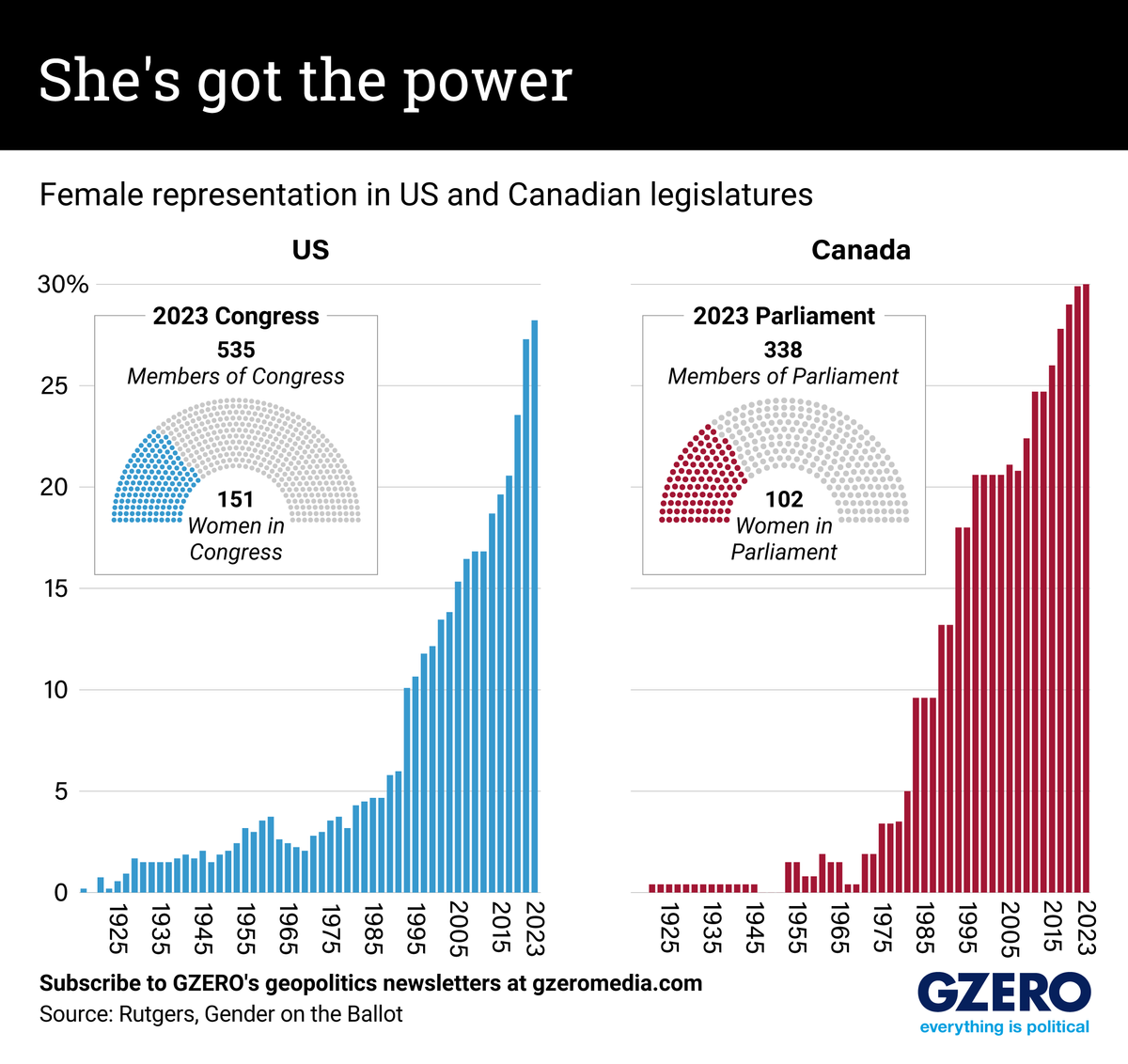Fresh out of Barnard College with a degree in political science, Riley is a writer and reporter for GZERO. When she isn’t writing about global politics, you can find her making GZERO’s crossword puzzles, conducting research on American politics, or persisting in her lifelong quest to learn French. Riley spends her time outside of work grilling, dancing, and wearing many hats (both literally and figuratively).
Happy women’s history month! This week, we look at female representation in the US Congress and Canadian Parliament.
In Canada, Agnes Campbell Macphail became the first woman elected to the House of Commons and the first female parliamentarian in 1921. Jeannette Rankin from Montana broke the glass ceiling in the US by being the first woman elected to Congress in 1916. A year later, she earned a second distinction by joining 49 of her House colleagues in voting against US entry into World War I – a vote that destroyed her prospects for reelection in 1918.
Today, women are making gains but remain underrepresented in the House of Commons and Congress. The 44th federal general election in 2021 saw women win 103 of the 338 seats in the House of Commons, marking the first time women's representation in the House surpassed 30%. In the US Congress, there are 126 women in the 435-seat-strong House of Representatives and 25 women serving in the Senate.






